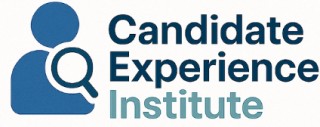The Essence of Full Cycle Recruiting
Embracing the Concept of Comprehensive Talent Acquisition
The full cycle of recruiting is more than just a collection of steps. It is a comprehensive approach to talent acquisition that ensures a smooth and cohesive experience for candidates from start to finish. This holistic strategy not only streamlines the recruitment process but also enhances candidate experience by emphasizing quality interactions and transparent communication.
Understanding the full recruiting cycle begins with recognizing each phase's role in attracting, evaluating, and onboarding top talent. Initially, the candidate journey starts with drafting job descriptions that clearly articulate the skills and qualifications required for the role. This stage sets the expectations and provides a thorough understanding of what the position entails.
Recruiters and hiring managers then embark on sourcing potential candidates using various tools and technologies. This is where management software comes into play, aiding in tracking candidates and maintaining an organized database.
But perhaps one of the most effective strategies at this point is the implementation of prehire assessments. These tools are pivotal in evaluating candidates' skills even before an interview comes into play. To learn more about enhancing candidate experience with effective assessments, you might find this
resource helpful.
Throughout this phase, maintaining a candidate-centric mindset is crucial. By putting emphasis on creating a welcoming environment and investing in top-notch communication, organizations can remarkably improve their candidate experience. These best practices not only help in acquiring the right talent but also foster positive impressions that last throughout an employee’s lifecycle.
Engagement through Initial Connection
When embarking on the journey of recruitment, setting a strong foundation during the initial contact is paramount. The manner in which you initiate communication with candidates lays the groundwork for their entire experience, influencing their perception of the company and its culture.
To create a memorable first impression, recruiters should focus on the following best practices:
- Clear Job Descriptions: Make sure that job descriptions are not only detailed but also reflect the company’s values and culture. This assists in attracting candidates whose personal goals align with the organization's objectives.
- Responsive Communication: Timely responses can make a notable difference. Whether the initial contact is made via email, phone, or through recruitment management software, ensure that communication is prompt and courteous. This demonstrates respect for the candidate's time and interest.
- Personalized Interaction: Personalizing your communication can help engage top talent. Address candidates by name, mention specific skills or experiences that caught your attention, and discuss how they relate to the opportunity.
- Pre-Screening Insights: Providing insight into the next steps of the hiring process helps candidates prepare, easing anxiety and setting expectations. Explain the life cycle of the recruitment process and what they can anticipate at each stage.
- Showcasing Company Culture and Benefits: Early interactions are an opportunity to highlight your company’s unique benefits, such as flexible work arrangements or career development opportunities. This can entice candidates by offering them a glimpse into what life as an employee is like.
An effective initial contact is not just about exchanging information; it’s about building a connection that can be nurtured throughout the recruitment cycle. For more strategies on enhancing candidate experience through effective prehire assessments, consider exploring
this valuable resource.
Creating a welcoming and professional first impression can transform potential candidates into enthusiastic members of your organization, aiding in the seamless transition from candidate to onboarded employee.
Interview Process: Building a Connection
Connecting Through the Conversation
The interview stage of the full cycle recruiting process is crucial in creating a positive candidate experience. At this point, both candidates and recruiters have established initial engagement and moved forward in the hiring process. The interview is not just an assessment of skills and qualifications, but an opportunity to build a genuine connection with potential future employees.
To achieve the best outcomes, it's vital for recruiters and hiring managers to prepare thoroughly. This includes understanding the job description and the key competencies required. Using management software and recruitment tools can aid in organizing interviews efficiently, ensuring each candidate is given a fair opportunity.
Effective communication is essential during interviews. Recruiters should aim to create an open dialogue that allows candidates to express their skills and experiences while also providing insight into the company's values and culture. This can be achieved by asking open-ended questions that encourage detailed responses.
Additionally, using structured interviews as a best practice ensures fairness and consistency across candidate evaluations. It involves using the same set of questions for each candidate, allowing for an objective comparison of talent. Notably, assessing not only technical skills but also cultural fit and potential for growth can enhance the recruitment process.
Feedback from this stage should also be timely and constructive. Candidates appreciate knowing where they stand after interviews. Lack of communication can lead to a negative impression, which tarnishes the overall candidate experience.
Incorporating these elements in the interview process can significantly influence the candidate's perception of the company and impact their decision-making should they receive a job offer. For a deeper understanding of how interview techniques align with pre-hire assessments, you can explore how
effective pre-hire assessments enhance candidate experience.
Continuous Engagement and Clear Communication
Effective communication and timely feedback are crucial components of the recruitment process. They play a pivotal role in ensuring candidates have a positive experience, no matter the outcome of the hiring decision. In a world where top talent is a coveted asset, providing a seamless experience through the cycle of recruiting can set your organization apart from competitors.
Throughout the recruiting process, candidates appreciate transparency and regular updates regarding their application status. Implementing best practices, such as utilizing management software tools for candidate tracking, can streamline this communication. This practice not only keeps candidates informed about where they stand in the hiring process, but also reflects the organization's respect and consideration for their time and effort.
Recruitment isn't solely a one-sided assessment; it's also about building a connection and understanding how candidates fit into your organization's culture. Regular feedback loops during the hiring process create opportunities for candidates to ask questions, express concerns, and feel valued beyond their resume or job description. This interaction fosters a two-way relationship, enhancing both the candidate's experience and the employer's reputation in the talent market.
Additionally, recruiters must be equipped with the necessary skills to provide actionable feedback, whether candidates advance in the recruitment process or not. Constructive feedback benefits candidates by offering insights that can be leveraged for future job applications. For candidates who make it to later stages, clear expectations about next steps, possible interviews, and decision timelines ensure the process is as transparent as possible.
The ultimate goal of maintaining open lines of communication is to leave candidates with a respectful and professional impression, one that encourages them to consider future opportunities within the organization, even if they do not receive a job offer this time. By prioritizing clear communication and consistent feedback throughout the full cycle of recruiting, companies can significantly enhance the overall candidate experience.
Decision-Making: Transparency and Fairness
Fostering Transparency and Ensuring Fairness
The decision-making phase of the full cycle recruiting process is pivotal in shaping a positive candidate experience. At this stage, it is crucial for both the recruiter and the hiring manager to convey transparency and fairness to the candidates involved. Transparency in recruitment instills trust, while fairness ensures the equitable treatment of all candidates.
Candidates appreciate open communication about where they stand in the hiring process. Clear updates, whether via email or through recruitment management software, can significantly affect a candidate's perception of the company. Not knowing where they stand leaves candidates in a state of uncertainty, which can negatively impact their experience and the company's employer brand.
It's essential for recruiters to communicate decisions promptly, explaining the reasons behind them when possible. Leveraging management software tools can streamline the notification process, ensuring timeliness and accuracy. When candidates are not selected, providing constructive feedback not only demonstrates respect but can also help them improve their skills for future opportunities.
Moreover, fairness should govern the entire process, from the initial job description to the final hiring decision. Implementing best practices involves using standardized evaluation criteria and reducing biases in the recruitment process. Tools like pre-employment assessments can offer objective insights into a candidate's fit for the role, adding another layer of fairness.
Employing a candidate-centered approach during decision-making can retain top talent within the candidate network. Candidates who feel valued and respected, even if not initially selected, might consider future opportunities with the organization. This proactive approach of managing candidate expectations and perceptions is crucial in the recruiter's toolkit for maintaining a strong talent pipeline.
Incorporating transparency and fairness, hiring managers and recruiters alike can navigate the complexities of the recruitment cycle, ensuring a positive candidate experience throughout the entire job journey.
Onboarding: The Final Step in Full Cycle Recruiting
Integrating New Hires: A Seamless Transition
Onboarding marks the concluding stage of the recruiting full cycle, yet it sets the foundation for a successful journey with the organization. This phase is crucial, not only for the new employee but also for hiring managers and the entire recruitment process.
As crucial as the initial contact, a structured and comprehensive onboarding process helps ensure that candidates feel welcomed, informed, and prepared. The best practices within onboarding focus on creating an environment that fosters engagement and integration into the company culture.
- Effective Planning: The initial step is to design a detailed plan that outlines the onboarding schedule. This schedule should cover initial training, introduction to the company’s mission, and alignment with the job description.
- Utilizing Onboarding Tools: Leveraging management software can streamline the onboarding process, providing an organized platform for documentation, training modules, and feedback mechanisms.
- Engagement from Day One: Engaging new employees from their start enables them to feel part of the team. Regular check-ins by the recruiter and the hiring manager can identify any issues early and provide support where needed, increasing the effectiveness of talent acquisition.
- Building a Supportive Network: Connecting new hires with a mentor or a buddy can ease their integration, offering them a go-to person within the organization.
- Continuous Feedback: Constructive feedback is vital from the onset. It not only aids the new employee in their immediate tasks but enhances the holistic candidate experience as it assures them they are supported in their growth.
By implementing these aspects into the onboarding phase, organizations not only ensure they are retaining top talent but also solidify a reputation for best practices in their hiring and recruitment cycle. The final step in full cycle recruitment not only sets the tone for the employee's life cycle but enhances their overall experience, reflecting positively on the company’s brand.














